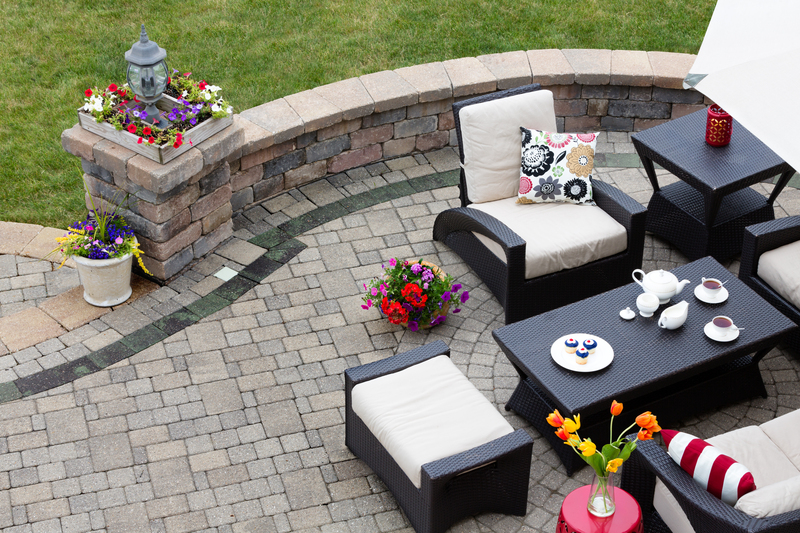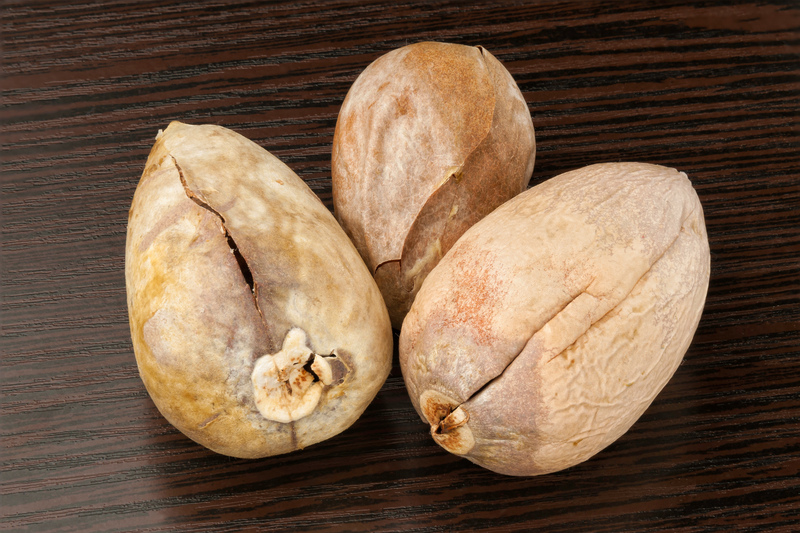Tips for Creating a Safe and Interactive Children's Garden
Posted on 23/09/2025
Tips for Creating a Safe and Interactive Children's Garden
A garden offers a magical environment for children to learn, explore, and connect with nature. Creating a safe and interactive children's garden will nurture curiosity, spark creativity, and develop hands-on skills--from planting and harvesting to bug watching and sensory play. In this article, we share expert tips to design a garden that is both secure and inviting for children while supporting their growth and happiness.
Why Build a Children's Garden?
A children's garden goes far beyond simple outdoor play space. Whether in your backyard, at a community center, or within a school, a kids' garden fosters physical activity, teaches responsibility, and encourages environmental stewardship. Plus, interactive features and thoughtful planning make this space enjoyable and safe for kids of all ages.
- Enhances sensory development through sight, touch, smell, and taste.
- Builds problem-solving and teamwork skills.
- Promotes healthy eating by growing fruits and vegetables.
- Provides a peaceful spot for relaxation and imaginative play.

Key Principles for Designing a Safe Children's Garden
When planning a safe children's garden, consider these essential principles to ensure both fun and protection:
1. Choose the Right Location
- Ensure the garden is easily visible from the house or main building for easy supervision.
- Select an area with partial shade and adequate sunlight--preferably a spot sheltered from strong winds.
- Avoid steep slopes, large trees with exposed roots, and other hazards.
2. Remove Hazards and Use Child-Friendly Materials
- Test soil for contaminants like lead or pesticides, especially in urban spaces.
- Remove sharp objects, glass, tools, or dangerous debris in advance.
- Replace or pad hard edges on raised beds, benches, and play structures.
- Use non-toxic, eco-friendly materials for garden beds, paths, and mulch.
3. Define Safe Pathways and Boundaries
- Lay out soft, even pathways using bark mulch, pea gravel, or rubber tiles to prevent slips.
- Install low fences or hedges for boundaries--consider using living willow or shrubs for a natural border.
- Incorporate easy-access gates or archways to mark entry and exit points.
Interactive Elements for a Children's Garden
Designing an interactive kids' garden is all about adding features that will captivate children's imaginations. These ideas promote learning, movement, and creativity:
1. Sensory Zones
- Plant aromatic herbs (like mint, lavender, and basil) for scent exploration.
- Add grasses, lamb's ear, and succulents with interesting textures for tactile play.
- Include bright-colored flowers and fruits for visual excitement.
- Install a small water element--like a shallow birdbath or trickling fountain.
2. Edible Plant Sections
- Grow easy, child-friendly vegetables: cherry tomatoes, snap peas, carrots, or radishes.
- Include berries and miniature fruit trees if possible; surround with soft mulch for safety.
- Label plants with fun signs--kids love personalized or decorated garden markers.
3. Wildlife and Bug Habitats
- Set up butterfly feeders, bee hotels, and ladybug houses to attract beneficial insects.
- Build small log piles or stone stacks as hideaways for frogs, lizards, or insects.
- Plant a mix of native wildflowers for pollinators; teach children to observe without disturbing wildlife.
4. Play Features and Artistic Touches
- Incorporate stepping stones, willow tunnels, fairy houses, or mini forts for imaginative play.
- Hang wind chimes, garden art, or weather-proof musical instruments for creative interaction.
- Paint rocks, decorate pots, or add a mural wall for children's art displays.
Practical Tips for Maintaining Garden Safety
Safety in an interactive children's garden is an ongoing commitment. Here are essential maintenance practices:
- Regularly check for new hazards: Look for broken equipment, loose boards, or overgrown plants that may block paths.
- Store fertilizers, sharp tools, and chemicals in locked sheds or out of children's reach.
- Keep the garden tidy--trim back prickly or poisonous plants if they self-seed.
- Inspect watering systems (hoses, sprinklers) for leaks and slipping hazards.
- Apply organic mulch and natural pest controls; avoid synthetic pesticides.
How to Choose Safe Plants for a Kids' Garden
Plant safety is crucial for every child-friendly landscape. Some common plants, though beautiful, may pose risks if touched or ingested. When selecting greenery, follow these guidelines:
- Avoid toxic species like foxglove, oleander, yew, castor bean, angel's trumpet, and daffodil bulbs.
- Choose edible types whenever possible; even common herbs make excellent sensory plants.
- Supervise young children--teach them never to eat unknown berries, seeds, or leaves without adult permission.
- Provide a reference sheet with safe and unsafe garden plants for helpers or guests.
Encourage Participation and Learning
The most successful children's gardens engage kids at every step. Involve children in planning, planting, and caring for the garden. Let them have a say in what to grow and provide age-appropriate tools--like lightweight trowels, gloves, or watering cans with easy grips.
- Set up a "child's choice" bed where kids pick their own seeds and track growth.
- Arrange scavenger hunts for leaves, insects, or natural art materials.
- Host mini-gardening workshops to teach planting, composting, or nature crafts.
Making the Garden Accessible for All Ages & Abilities
Every child should feel welcome in the safe and interactive garden. Inclusive design features may include:
- Raised beds with easy reach for small children or wheelchair users.
- Wide, level paths free of obstacles; non-slip surfaces for safe travel.
- Shaded seating areas and sensory panels at multiple heights for rest and play.
- Bright color contrasts on edges and entry points for visual guidance.
Creative Ways to Foster Long-Term Interest
A garden that changes across the seasons can keep children fascinated all year:
- Grow flowers that bloom at different times--early crocus, summer sunflowers, autumn asters, winter pansies.
- Add evergreens, seed pods, or colorful bark for winter interest.
- Plan for rotating activities--plant bulbs in fall, make scarecrows in autumn, or set up summer water play areas (with supervision and safe water depth of course).
Essential Gardening Tools for Children
Choosing kid-safe tools is critical for a comfortable and enjoyable gardening experience. Here are a few must-haves:
- Short-handled, lightweight tools with rounded ends (spades, cultivators, trowels).
- Child-sized gloves and hats for sun safety.
- Sturdy, shatterproof watering cans.
- Brightly colored toolboxes to easily spot lost items.
Teach children to care for and store their tools properly--this supports responsibility and keeps the gardening space tidy and safe.
Top Safety Reminders for Children's Gardens
- Always supervise children--even the safest garden can present unexpected risks.
- Use sunscreen, hats, and encourage hydration during outdoor play.
- Review garden rules with all children and helpers; set clear boundaries about where to dig, climb, or pick.
- Introduce safe gardening habits--never taste unknown plants and wash hands after gardening.
Case Study: A Magical Backyard Children's Garden
Let's consider the example of the Martinez family, who transformed a corner of their suburban yard into a thriving interactive kids' garden. Using raised beds filled with rich, organic soil, the children helped plant a mix of strawberries, snap peas, and calendulas.
- Natural stepping stones created a winding path for sensory walks.
- A willow tunnel offered shade and a secret clubhouse feel, while a butterfly feeder and native flowers brought in pollinators for observation.
- Garden art made by the children, like painted rocks and wind chimes, personalized the space and gave them ownership.
- Weekly "garden days" encouraged regular tending and creative play--building scarecrows, painting signposts, and learning about insects that visit the garden beds.
The result? The Martinez kids became confident gardeners, adventurous eaters, and keen nature observers--all in a safe, stimulating outdoor classroom.

Conclusion: Growing More Than Plants
A well-planned safe and interactive children's garden is a gift that supports lifelong learning, discovery, and joy. By prioritizing safety, encouraging exploration, and adapting the design to children's needs and interests, you can cultivate not just flowers and vegetables, but confident, creative, and environmentally conscious young people.
Remember, the best gardens for kids are those that feel welcoming, nurturing, and full of opportunity--where every child can dig, dream, and grow!
Further Reading and Resources
- KidsGardening.org: Family Gardening Tips
- Royal Horticultural Society: Gardening with Children
- National Wildlife Federation: School & Family Habitat Gardens
Set out today and create your own interactive, safe, and magical children's garden--your children will thank you for years of joyful memories and outdoor adventures!

